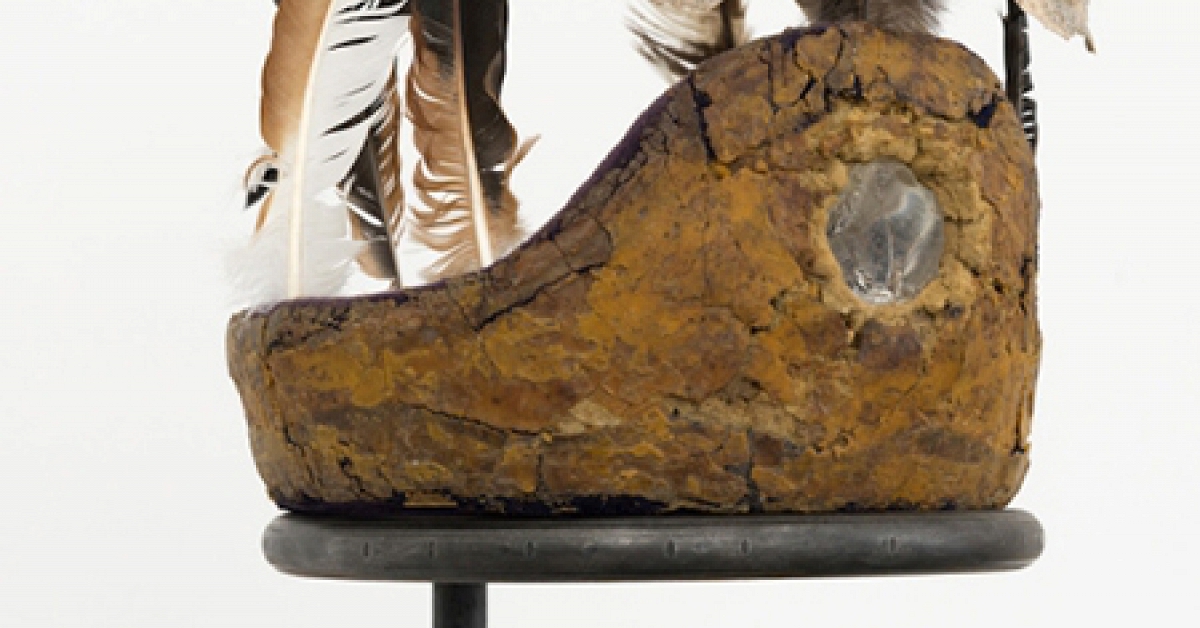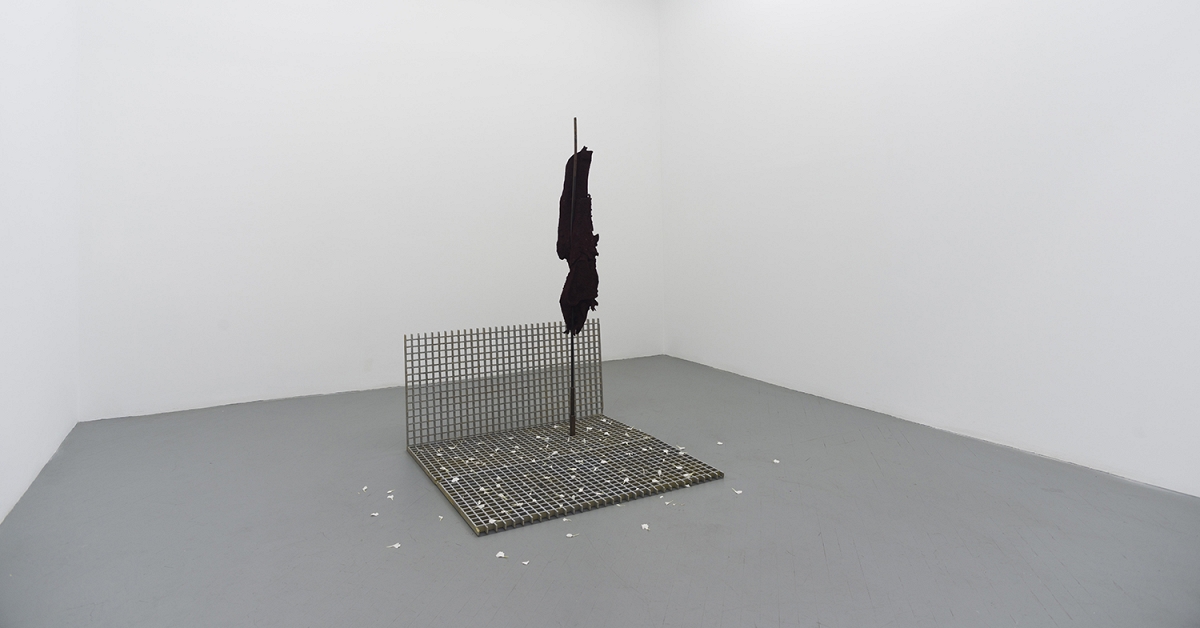Houston-Based Artist Jamal D. Cyrus on Receiving 2020 David C. Driskell Prize:‘The Symbolism is Extremely Important to Me’
Culture Type / Feb 12, 2020 / by Victor L. Valentine / Go to Original
The High Museum of Art in Atlanta named artist Jamal D. Cyrus recipient of the 2020 David C. Driskell Prize. Cyrus lives and works in Houston where his conceptual and research-driven practice mines American history with a focus on better understanding cultural and national heritage in the context of black political movements, social justice issues, and the influence of the African diaspora.
Each year, the prize recognizes an artist or scholar whose work has made a significant contribution to the field of African American art. Scholar Huey Copeland won last year. Other recent recipients include artist Amy Sherald (2018), curator Naima J. Keith (2017), artist Mark Bradford (2016), and now Cyrus.
“Receiving the award was totally unexpected. I was working on the floor of my studio when I got the call, and am still buzzing from the surprise,” Cyrus told Culture Type by email. “I feel very honored to be included in this incredible line of artists and scholars. The symbolism behind the award is extremely important to me.”
The High Museum announced the selection yesterday. Cyrus will be honored at the museum’s annual Driskell Prize Dinner on April 24 and receive a $25,000 cash award.
“Jamal Cyrus’ multifaceted work poses important questions about how American history is recorded and shared,” Rand Suffolk, director of the High Museum, said in a statement. “We are honored to recognize his contributions to African American art and to support his practice and ongoing exploration with the 2020 Driskell Prize.”
Cyrus’s output spans a range of mediums, from object-based and mixed-media works to textiles, installation and performance. Over the past 15 years, his work has been presented in more than 40 solo and group exhibitions. “Winners Have Yet To Be Announced” (2009), his first solo show in New York, was curated by Rashida Bumbray at The Kitchen.
He was also featured in the 2006 Whitney Biennial; “Fore” (2013) at the Studio Museum in Harlem, part of the museum’s series of group exhibitions dedicated to emerging artists; “Prospect.4: The Lotus in Spite of the Swamp” (2017), the New Orleans biennial for which Franklin Sirmans served as artistic
director; and Front International: The Cleveland Triennial for Contemporary Art (2018).
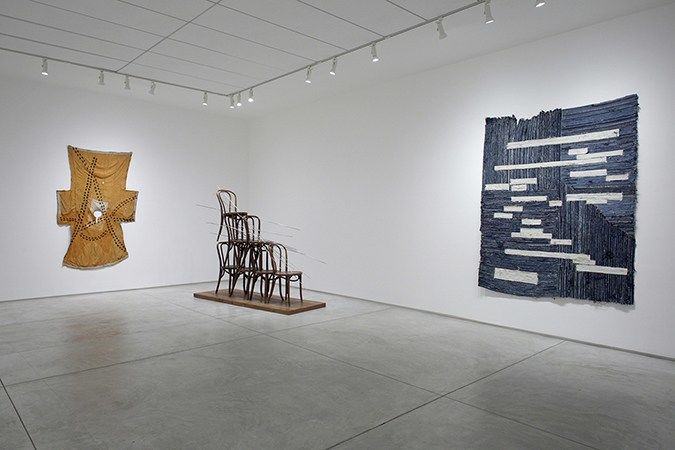 Installation view of “Jamal Cyrus: Currents and Currencies,” Inman Gallery, Houston (Nov. 8, 2019-Jan. 11, 2020). | Photo: Inman Gallery
Installation view of “Jamal Cyrus: Currents and Currencies,” Inman Gallery, Houston (Nov. 8, 2019-Jan. 11, 2020). | Photo: Inman Gallery
In recent years, Cyrus has participated in several important shows that provided a platform for showcasing the unique interrogations of his practice. These exhibitions include “Radical Presence: Black Performance in Contemporary Art” (2012), organized by the Contemporary Arts Museum Houston; “AgitProp!” (2015) at the Brooklyn Museum; “The Freedom Principle: Experiments in Art and Music, 1965-Now,” organized by the Museum of Contemporary Art Chicago; and “Walls Turned Sideways: Artists Confront the Justice System” (2018-19) at CAM Houston.
Cyrus is a member of Otabenga Jones & Associates. The artist collective was founded in 2002 by artist and educator Otabenga Jones in collaboration with several artists including Cyrus, Dawolu Jabari Anderson, Kenya Evans, and Robert A. Pruitt. The collective has exhibited at the Menil Collection in Houston (2007), Smithsonian National Museum of African American History and Culture in Washington, D.C. (2008), California African American Museum in Los Angeles (2008), and Project Row Houses in Houston (2014), among other venues.
At the High Museum, the collective was featured in “After 1968: Contemporary Artists and the Civil Rights Legacy” (2008), a companion exhibition to “Road to Freedom: Photographs of the Civil Rights Movement, 1956-1968.” Otabenga Jones & Associates also contributed to “Funk, God, Jazz, and Medicine: Black Radical Brooklyn” (2014), a monthlong exhibition of installations and commissions at Weeksville Heritage Center, organized in collaboration with Creative Time.
Cyrus earned a BFA from the University of Houston (2004) and holds an MFA from the University of Pennsylvania (2008). He is also an alum of the Skowhegan School of Painting and Sculpture (2005). In addition to the Driskell Prize, he has received a number of important awards. Most recently, he was selected for the BMW Art Journey, a unique grant providing an opportunity for extensive travel.
During summer 2018, Cyrus embarked on a 45-day journey that took him to four continents, seven countries, and 12 cities. The trip included visits to Accra, Paris, London, and New Orleans. Reflecting on the experience in the video below, Cyrus said, “The journey inspired in me this idea of thinking about travel, not as a tourist but as a researcher. The goal was to understand how migration changed ideas related to creative expression.”
A recent solo show at Inman Gallery in Houston was his first exhibition since returning from his travels. “Jamal Cyrus: Currents and Currencies” (Nov. 8, 2019-Jan. 11, 2020) begins to unpack his encounters. I reached out to Cyrus by email to learn more about his practice. He shared insights about his work and thoughts on winning the Driskell Prize:
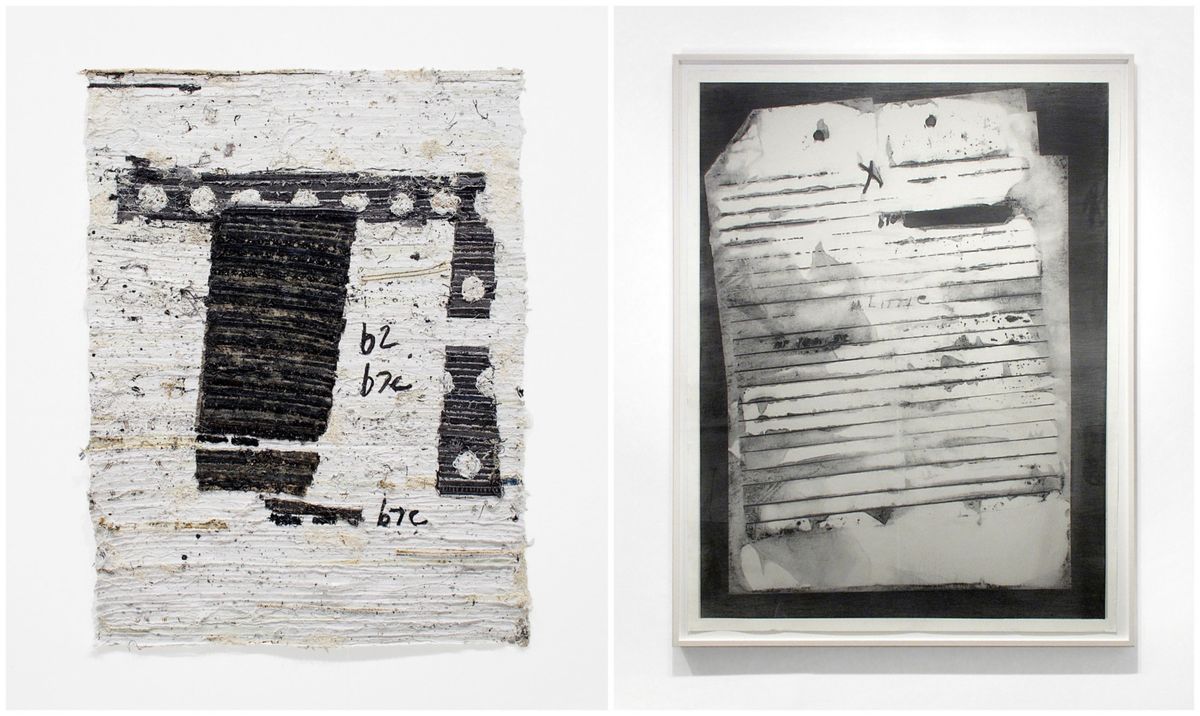 From left, JAMAL D. CYRUS, “Captured Letter From Paris,” 2019 (denim, thread, ink, wax, bleach, 40 x 30 1/2 in / 101.6 x 77.5 cm; 47 1/4 x 37 1/4 inches / 120 x 94.6 cm, framed); JAMAL D. CYRUS, “X Codex,” 2008 (graphite powder on paper, 80 x 60 inches / 203.2 x 152.4 cm; 83 x 64.5 x 2 inches / 210.8 x 163.8 x 5.1 cm, framed). | Courtesy High Museum of Art
From left, JAMAL D. CYRUS, “Captured Letter From Paris,” 2019 (denim, thread, ink, wax, bleach, 40 x 30 1/2 in / 101.6 x 77.5 cm; 47 1/4 x 37 1/4 inches / 120 x 94.6 cm, framed); JAMAL D. CYRUS, “X Codex,” 2008 (graphite powder on paper, 80 x 60 inches / 203.2 x 152.4 cm; 83 x 64.5 x 2 inches / 210.8 x 163.8 x 5.1 cm, framed). | Courtesy High Museum of Art
CULTURE TYPE: How would you describe your practice?
JAMAL D. CYRUS: I use my work as a means of filling the gaps in my understanding of African American culture and American history. This is done with the aim of catching up on lessons my parents and educational institutions to which I belonged, could not or would not teach. The information is then processed through a variety of artistic media, and approaches to representation.
Has your work evolved since your recent international travels in the wake of winning the BMW prize?
The BMW Art Journey allowed me to intimately experience matters which I had only known second hand. For my creative approach this was extremely important, and added a layer of intimacy to my understanding of the people, places, and creative traditions of the African Diaspora. As an African American the journey complicated my understanding of African American culture by allowing me to see and learn more about its impact outside of the US, as well as find out more about its long-term international collaborators.
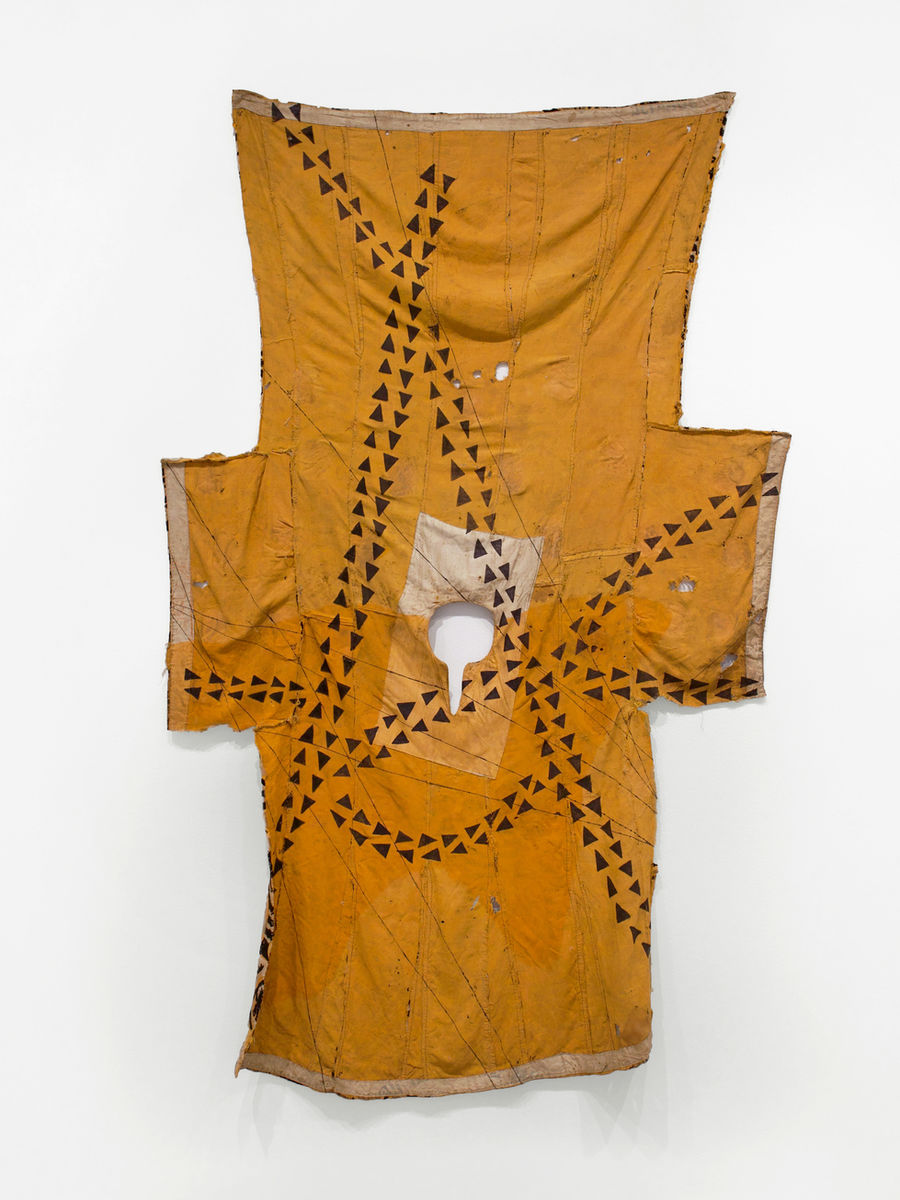 JAMAL D. CYRUS, “Djeli Brown,” 2019 (found garment with leather pouches, marker, 80 1/2 x 50 3/4 inches / 204.5 x 128.9 cm). | Courtesy High Museum of Art
JAMAL D. CYRUS, “Djeli Brown,” 2019 (found garment with leather pouches, marker, 80 1/2 x 50 3/4 inches / 204.5 x 128.9 cm). | Courtesy High Museum of Art
Tell me about winning the Driskell Prize? Does the symbolism of the award, being named in honor of David Driskell and focusing on the field of African American art hold any special meaning for you?
The symbolism behind the award is extremely important to me. In regards to my art education, I was raised to know and honor the creative tradition from which I sprang, so my primary drive is to contribute to the progress and vitality of African American visual culture. Receiving this award lets me know I am on the right path to achieve that goal.
 JAMAL D. CYRUS, “Pride Frieze—Jerry White’s Record Shop, Central Avenue, Los Angeles,” 2017 (record sleeves, vinyl records, posters, ink, watercolor, tape, masonite, gesso, acrylic paint, plywood, wax, Plexiglas, reclaimed salvaged wood, 121 1/4 x 126 1/2 x 12 inches / 308 x 321.3 x 30.5 cm). | Courtesy High Museum of Art
JAMAL D. CYRUS, “Pride Frieze—Jerry White’s Record Shop, Central Avenue, Los Angeles,” 2017 (record sleeves, vinyl records, posters, ink, watercolor, tape, masonite, gesso, acrylic paint, plywood, wax, Plexiglas, reclaimed salvaged wood, 121 1/4 x 126 1/2 x 12 inches / 308 x 321.3 x 30.5 cm). | Courtesy High Museum of Art
Each year, the prize recognizes an artist or scholar whose work has made a significant contribution to the field of African American art. Scholar Huey Copeland won last year. Other recent recipients include artist Amy Sherald (2018), curator Naima J. Keith (2017), artist Mark Bradford (2016), and now Cyrus.
“Receiving the award was totally unexpected. I was working on the floor of my studio when I got the call, and am still buzzing from the surprise,” Cyrus told Culture Type by email. “I feel very honored to be included in this incredible line of artists and scholars. The symbolism behind the award is extremely important to me.”
The High Museum announced the selection yesterday. Cyrus will be honored at the museum’s annual Driskell Prize Dinner on April 24 and receive a $25,000 cash award.
“Jamal Cyrus’ multifaceted work poses important questions about how American history is recorded and shared,” Rand Suffolk, director of the High Museum, said in a statement. “We are honored to recognize his contributions to African American art and to support his practice and ongoing exploration with the 2020 Driskell Prize.”
Cyrus’s output spans a range of mediums, from object-based and mixed-media works to textiles, installation and performance. Over the past 15 years, his work has been presented in more than 40 solo and group exhibitions. “Winners Have Yet To Be Announced” (2009), his first solo show in New York, was curated by Rashida Bumbray at The Kitchen.
He was also featured in the 2006 Whitney Biennial; “Fore” (2013) at the Studio Museum in Harlem, part of the museum’s series of group exhibitions dedicated to emerging artists; “Prospect.4: The Lotus in Spite of the Swamp” (2017), the New Orleans biennial for which Franklin Sirmans served as artistic
director; and Front International: The Cleveland Triennial for Contemporary Art (2018).

In recent years, Cyrus has participated in several important shows that provided a platform for showcasing the unique interrogations of his practice. These exhibitions include “Radical Presence: Black Performance in Contemporary Art” (2012), organized by the Contemporary Arts Museum Houston; “AgitProp!” (2015) at the Brooklyn Museum; “The Freedom Principle: Experiments in Art and Music, 1965-Now,” organized by the Museum of Contemporary Art Chicago; and “Walls Turned Sideways: Artists Confront the Justice System” (2018-19) at CAM Houston.
Cyrus is a member of Otabenga Jones & Associates. The artist collective was founded in 2002 by artist and educator Otabenga Jones in collaboration with several artists including Cyrus, Dawolu Jabari Anderson, Kenya Evans, and Robert A. Pruitt. The collective has exhibited at the Menil Collection in Houston (2007), Smithsonian National Museum of African American History and Culture in Washington, D.C. (2008), California African American Museum in Los Angeles (2008), and Project Row Houses in Houston (2014), among other venues.
At the High Museum, the collective was featured in “After 1968: Contemporary Artists and the Civil Rights Legacy” (2008), a companion exhibition to “Road to Freedom: Photographs of the Civil Rights Movement, 1956-1968.” Otabenga Jones & Associates also contributed to “Funk, God, Jazz, and Medicine: Black Radical Brooklyn” (2014), a monthlong exhibition of installations and commissions at Weeksville Heritage Center, organized in collaboration with Creative Time.
Cyrus earned a BFA from the University of Houston (2004) and holds an MFA from the University of Pennsylvania (2008). He is also an alum of the Skowhegan School of Painting and Sculpture (2005). In addition to the Driskell Prize, he has received a number of important awards. Most recently, he was selected for the BMW Art Journey, a unique grant providing an opportunity for extensive travel.
During summer 2018, Cyrus embarked on a 45-day journey that took him to four continents, seven countries, and 12 cities. The trip included visits to Accra, Paris, London, and New Orleans. Reflecting on the experience in the video below, Cyrus said, “The journey inspired in me this idea of thinking about travel, not as a tourist but as a researcher. The goal was to understand how migration changed ideas related to creative expression.”
A recent solo show at Inman Gallery in Houston was his first exhibition since returning from his travels. “Jamal Cyrus: Currents and Currencies” (Nov. 8, 2019-Jan. 11, 2020) begins to unpack his encounters. I reached out to Cyrus by email to learn more about his practice. He shared insights about his work and thoughts on winning the Driskell Prize:

CULTURE TYPE: How would you describe your practice?
JAMAL D. CYRUS: I use my work as a means of filling the gaps in my understanding of African American culture and American history. This is done with the aim of catching up on lessons my parents and educational institutions to which I belonged, could not or would not teach. The information is then processed through a variety of artistic media, and approaches to representation.
Has your work evolved since your recent international travels in the wake of winning the BMW prize?
The BMW Art Journey allowed me to intimately experience matters which I had only known second hand. For my creative approach this was extremely important, and added a layer of intimacy to my understanding of the people, places, and creative traditions of the African Diaspora. As an African American the journey complicated my understanding of African American culture by allowing me to see and learn more about its impact outside of the US, as well as find out more about its long-term international collaborators.

Tell me about winning the Driskell Prize? Does the symbolism of the award, being named in honor of David Driskell and focusing on the field of African American art hold any special meaning for you?
The symbolism behind the award is extremely important to me. In regards to my art education, I was raised to know and honor the creative tradition from which I sprang, so my primary drive is to contribute to the progress and vitality of African American visual culture. Receiving this award lets me know I am on the right path to achieve that goal.





